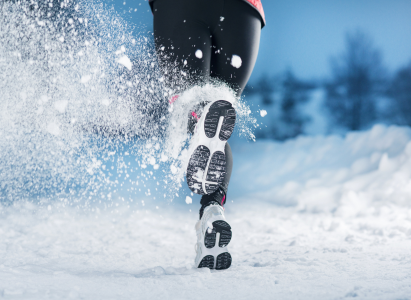Base Layer Top
Base layers are designed to stick very close to the skin to serve as an insulating layer. They're not just used by runners, but also ski / snowboard enthusiasts in order to keep the heat in at high altitudes.
For runners, though, anything that wears close to the skin like a base layer will typically generate some sweat as heat is built up on the run. Here at Dare 2b, we've designed our base layers with fast wicking and quick drying properties, so any sweat you do build up won't linger around, along with an anti-bacterial finish to control odours.
Running Top
If you're running with a base layer top underneath then you'll be fine with wearing a regular short sleeve t-shirt over it rather than having to wear just a long sleeve running top on its own.
Running Jacket
Running jackets tend to be lightweight in order to be less taxing to run in, however when it's freezing cold outside you'll feel the benefit of something a bit thicker. A waterproof jacket is a handy alternative, as they're light enough to run in and will stop the snow melting through. Here at Dare 2b, lots of our waterproofs also feature reflective detailing which will help keep you visible to nearby motorists and passers-by when running in dark conditions which are common throughout the winter season.
Running Bottoms (2 Options)
Shorts are great for ventilation, but they're fan favourites amongst runners for their unrestricting range of motion. Really though, you should be wearing something long-length in order to help fend off the cold. This will mostly come down to personal preference, but we've outlined two choices to wear for your running bottoms below:
1. Base Layer Leggings + ShortsIt's way to cold to run in just a pair of running shorts alone, (unless you prefer the hardcore approach) which is why it's best to slot a pair of base layer leggings underneath your shorts to stop the ice cold wind coming into direct contact with your skin.
2. Running Tights / JoggersIf you don't fancy wearing an underlayer, a pair of thick running tights or jogging bottoms will work just as well, their long-length will stop the cold breeze and splashing water coming into direct contact with your skin.
Running Accessories: Hats, Gloves & Thick Socks
Layers, layers and more layers. With the rest of your body wrapped up warm, the remaining places left exposed are your head, hands and ankles. To top off your winter running outfit, you'll want to accessorise with a thick pair of gloves, socks and a woolly hat large enough to cover your ears.
Running Shoes
If you're wondering what shoes to wear when running in snow, realistically you need a pair of running shoes that'll have a grippy tread with room for snow to pack in to, (a little bit like how winter tyres work on cars) which likely means your usual pair of trainers won't cut it as trainers typically have a flatter, smoother tread. Realistically, you won't be able to run at full pelt without running the risk of falling over, so the aim is to minimize this risk. On the other hand, you'll also need to make sure your shoes have some degree of water repellent applied to the uppers to prevent melted snow finding its way into your socks. The combination of wet socks and rubbing trainers is a perfect recipe for a blister to form, which is why it's so important to prevent water from seeping in.
We hope you found our guide on what to wear running in the snow useful. You can discover more on our what to wear running series here. For more great running content, check out the running section of our blog.


